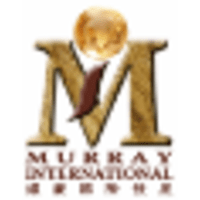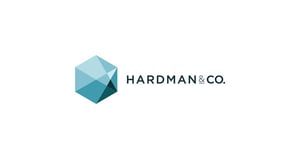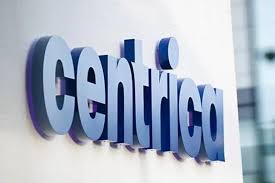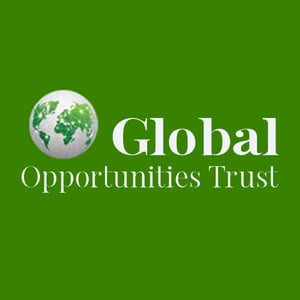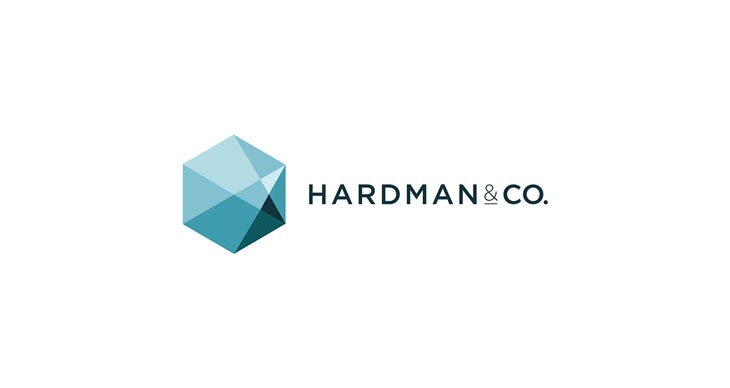Murray International Trust PLC (LON:MYI) is a globally-diversified investment trust aiming to deliver an attractive and growing income, alongside long-term capital growth.
| – | During the period the Company delivered a NAV total return of +6.0% and a share price total return of +11.6%, this compares a +1.0% increase in the Reference Index. |
| – | The Company declared two dividend distributions for the period of 2.6 pence per share each and remains committed to a progressive dividend policy. |
| – | The discount ended the period at -2.7% compared to -7.5% at 31 December 2024. |
| – | The diversification evident in the portfolio emerged in the key drivers of robust performance with an international consumer staple company (Philip Morris International), a Central American airport operator (Grupo ASUR), a leading Asian stock exchange (Hong Kong Exchanges and Clearing), an Asian communication services business (Singapore Telecommunications), and a European-based utility (Enel) making up the top five performing stocks for the period. |
| – | The most significant detractors during the period were Merck & Co., Bristol Myers Squibb, Diageo, Pernod Ricard and GlobalWafers. |
| – | During the period, new positions were initiated in Anglo-Australian mining giant Rio Tinto, Indian IT service company Infosys and Italian financial services provider Intesa Sanpaolo. |
| – | Murray International achieved AIC ‘Dividend Hero’ status, having delivered an increased dividend for the 20th consecutive year in 2024. |
Virginia Holmes, the Company’s Chair, commented:
“We are pleased to report six months of robust returns for our shareholders in a particularly turbulent period for global investors, with a NAV total return of +6.0% significantly outperforming the Company’s reference index and stronger share price performance of +11.6% as the discount to net assets at which the Company’s shares traded narrowed significantly.
During this period, from Wall Street to Asia’s tech-driven markets, investors eventually looked through turbulence experienced earlier in the year and risk appetite recovered sharply by mid-year leading many markets to reach new all-time highs. However, the path ahead is likely to remain uneven and challenging.
In this environment, investors will benefit from a patient, globally diversified, and risk-aware approach, which is central to our Manager’s strategy in pursuing Murray International’s aim of achieving an above average dividend yield, with long-term growth in dividends and capital ahead of inflation.”
The Directors of Murray International Trust PLC report the unaudited results of the Company for the six months ended 30 June 2025.
Performance Highlights
| Net asset value total returnA | Share price total returnA | ||
| Six months ended 30 June 2025 | Six months ended 30 June 2025 | ||
| +6.0% | +11.6% | ||
| Year ended 31 December 2024 | +8.1% | Year ended 31 December 2024 | +4.5% |
| Reference index total returnB | Discount to net asset valueA | ||
| Six months ended 30 June 2025 | As at 30 June 2025 | ||
| +1.0% | -2.7% | ||
| Year ended 31 December 2024 | +19.8% | As at 31 December 2024 | -7.5% |
| Ongoing charges ratioA | Net gearingA | ||
| As at 30 June 2025 | As at 30 June 2025 | ||
| 0.51% | 5.8% | ||
| As at 31 December 2024 | 0.52% | As at 31 December 2024 | 6.1% |
| A Alternative Performance Measure (see definition below). | |||
| B FTSE All World TR Index. | |||
Financial Calendar and Highlights
| Payment dates of quarterly dividends | 15 August 2025 18 November 2025 17 February 2026 18 May 2026 |
| Financial year end | 31 December |
| Expected announcement of results for year ending 31 December 2025 | March 2026 |
| Annual General Meeting | 23 April 2026 |
Financial Highlights
| 30 June 2025 | 31 December 2024 | % change | |
| Total assets less current liabilities (before deducting loan notes) | £1,816.0m | £1,788.8m | +1.5 |
| Net assets | £1,706.1m | £1,678.8m | +1.6 |
| Share price per Ordinary share (mid market)A | 280.0p | 257.5p | +8.7A |
| Net Asset Value per Ordinary share | 287.9p | 278.4p | +3.4A |
| Discount to Net Asset Value per Ordinary shareB | -2.7% | -7.5% | |
| Net gearingB | 5.8% | 6.1% | |
| Ongoing charges ratioB | 0.51% | 0.52% | |
| A The movement relates to capital only and does not take account of the reinvestment of dividends. | |||
| B Considered to be an Alternative Performance Measure. See definition below. | |||
Interim Board Report – Chair’s Statement
Background
The year began with positive momentum in financial markets driven by President Trump’s return, along with expectations for tax cuts and deregulation. However, this optimism quickly diminished after the “Liberation Day” sell off in April. This downturn was fuelled by President Trump’s threats of tariffs, fiscal concerns, tensions with the Federal Reserve, and unpredictable policy decisions. Geopolitical risks escalated with a direct conflict between Israel and Iran; however, a swift ceasefire helped restore some market stability. Sentiment improved following a surprising trade truce between the U.S. and China, along with a framework deal with the UK, and more trade agreements elsewhere. From Wall Street to Asia’s tech-driven markets, investors eventually looked through the turbulence experienced earlier in the year and risk appetite recovered sharply by mid-year leading many markets to reach new all-time highs.
Performance and Dividends
The net asset value (NAV) total return, with dividends reinvested, for the six months to 30 June 2025 was 6.0% compared with 1.0% for the Company’s Reference Index (the FTSE All World TR Index in GBP). Over the six-month period, the share price total return was 11.6%, as the discount to the NAV narrowed significantly to -2.7% from
-7.5% at 31 December 2024. The Manager’s Review contains more information about both the drivers of performance in the period and activity within the portfolio.
The first interim dividend of 2.6 pence per share (2024: 2.5p) in respect of the six months to 30 June 2025 is payable on 15 August 2025. The Board has declared a second interim dividend of 2.6 pence per share (2024: 2.5p) for the current year which will be paid on 18 November 2025 to shareholders on the register on 3 October 2025.
The Board remains committed to the Company’s progressive dividend policy given the Company’s investment objective to provide growing levels of income. This means that, in some years, revenue will be added to reserves while, in others, revenue may be taken from reserves to supplement earned revenue for that year to pay the annual dividend. Shareholders should not be surprised or concerned by either outcome as, over time, the Company will aim to pay out what the underlying portfolio earns. As a long-established investment trust, the Company has the benefit of over £78.5 million of distributable revenue reserves on its balance sheet at 30 June 2025, which equates to 1.12 times the dividend in respect of 2024.
MSCI ACWI High Dividend Yield Index
During the year, the Board reviewed the appropriateness of using the FTSE All-World Index as the Company’s “Reference Index”. As a result of this review, the Board concluded that it would be more helpful for shareholders if the index against which the portfolio’s performance is measured was more reflective of the Company’s investment style. The Board has therefore determined that with effect from 1 July 2025, the previous reference index should be changed and the MSCI ACWI High Dividend Yield Index adopted in its place as the Company’s benchmark index from that date.
Management of Premium/Discount
Your Board continues to believe that, in normal market conditions, it is appropriate to seek to address temporary imbalances in the supply and demand for the Company’s shares which might otherwise result in a recurring material discount or premium. The Board believes that this process is in all shareholders’ interests as it seeks to reduce volatility in the discount or premium to underlying NAV whilst also making a small positive contribution to the NAV. While we saw discounts generally narrow across the industry over the period, investment trust discounts remained wider than the long-term average. The Company bought back 10.5 million Ordinary Shares of 5p for Treasury during the period representing 1.8% of the issued share capital, at a total cost of £27.9 million and at a weighted average discount of -8.6%.
At 13 August 2025, the latest practicable date prior to publication of this Half Yearly Report, the NAV (including income) per share was 303.1p and the share price was 291.5p equating to a discount of 3.8% per Ordinary share.
Gearing
The Company’s borrowings consist of £110 million of unsecured loan notes which are fully drawn with £50m repayable in 2031 and the balance in 2037. The weighted cost of these fixed-rate loan notes is 2.56%. The borrowings represented a net gearing level of 5.8% based on the Company’s NAV at 30 June 2025 (31 December 2024: 6.1%). The Board continues to monitor options for further gearing but has concluded that interest rates at the present time remain too high. The Board will continue to keep this under review.
Ongoing Charges Ratio (“OCR”)
During the review period, the OCR remained broadly flat, ending the six months at 0.51% (31 December 2024: 0.52%). The Board remains focused on controlling costs and delivering value to shareholders. A full breakdown of the OCR calculation is provided below.
Board Composition
As part of the Board’s long-term succession planning, Alexandra Mackesy retired from the Board at the conclusion of the AGM in April 2025 and, as previously announced, the Directors welcomed Jeroen Huysinga to the Board as an independent non-executive Director on 1 May 2025. Jeroen is a highly experienced investment professional with a strong background of over 20 years in global equities and the management of investment trusts having been managing director global equities at JP Morgan Asset Management until his retirement in 2020.
Outlook
Global equity markets are navigating a complex macroeconomic environment. Although there was resilient performance in the first half of the year, there have also been periods of volatility and weakness, and the path ahead is likely to remain uneven. Despite these challenges, compelling opportunities exist. Earnings growth is gradually expanding beyond just the mega-cap technology companies. Central banks, particularly the European Central Bank, have implemented modest rate cuts, and there are expectations that the Federal Reserve will follow suit. This should support valuations and sustain investor sentiment. In emerging markets, lower interest rates and a weaker U.S. dollar may attract capital inflows, especially in Asia and Latin America. However, risks remain. Geopolitical tensions could lead to potential shocks, and concerns about the fiscal position of the United States persist. Trade tensions may also influence market dynamics and have a spillover effect on inflation, which could restrict central banks’ ability to ease monetary policy as currently anticipated. In this environment, investors will benefit from a patient, globally diversified, and risk-aware approach, which is central to how our Manager aims to meet the investment objectives.
Shareholder Engagement
The Board was pleased to note that almost 280 investors joined the pre-AGM webinar we hosted in April and many more have subsequently viewed the recording on the Company’s website. The Board sees this as a very helpful means of connecting with current and potential shareholders and addressing their questions. We expect that this process will be repeated ahead of the Annual General Meeting next April.
Shareholders’ views are very important to the Board and I encourage you to email me if you have feedback on the Company at VirginiaHolmes.Chair@abrdn.com.
Virginia Holmes
Chair
14 August 2025
Interim Board Report – Manager’s Review
Summary
The first half of 2025 proved to be a rollercoaster for global markets, underscoring both their vulnerability to shocks and their capacity for opportunity and recovery. Investors were whipsawed by a volatile mix of political developments, economic uncertainty, and geopolitical flashpoints that tested confidence across asset classes. Markets kicked off the year on a high note, lifted by renewed investor enthusiasm following President Trump’s return to office. Hopes for sweeping tax reforms and deregulation sparked a wave of optimism. But that sentiment quickly soured. April’s dramatic “Liberation Day” marked a turning point, as markets reacted sharply to a flurry of destabilising signals: tariff threats, fiscal instability, friction with the Federal Reserve, and erratic policy moves from Washington. Tensions abroad added to the unease. A brief but intense military confrontation between Israel and Iran rattled global investors, though the fact that it did not escalate and a ceasefire was agreed very quickly helped contain the fallout.
Unfortunately, efforts to broker peace in other conflict zones-namely between Russia and Ukraine, and Israel and Hamas-have not progressed at the same rate, casting a shadow over broader geopolitical stability. Despite the turbulence, a shift in tone emerged by mid-year. A surprise trade détente between the U.S. and China, along with a new framework agreement with the UK, helped ease fears of a global trade breakdown. Additional trade negotiations were reported to be underway, further lifting sentiment. By summer, risk appetite had returned, and equity markets across the globe-particularly in the U.S. and Asia-rallied to new highs. The first six months of 2025 serve as a vivid reminder of the risks and opportunities that global equity markets offer.
Which stocks have performed well?
Below we discuss the most significant contributors to relative performance this year. The diversification across geographies and industries evident in the portfolio emerges as a key driver of robust performance with an international consumer staple company, a Central American airport operator, a leading Asian stock exchange, an Asian communication services business, and a European-based utility making up the top five performing stocks for the six months.
Philip Morris International (“Philip Morris”), the portfolio’s single largest holding, has been the best performing investment during the first half of the year in relative terms. The company is a formidable business, generating substantial earnings growth and free cash flows as it leverages its traditional tobacco business to facilitate its transition into reduced-risk and smoke-free products, which now account for approximately 40% of its revenues. It has proven itself to be relatively immune to the tariff noise that has plagued markets at times, and its defensive, growing earnings stream is attractive given the environment. Given the strength of the share price, we have reduced the Company’s holding marginally during the period under review, recycling that capital into other companies that have performed less strongly but remain attractive. While we remain comfortable with the investment outlook for Philip Morris, it is unlikely to be a recipient of fresh capital at this juncture, given its very strong performance over the last twelve months.
Grupo ASUR is the owner and operator of sixteen airports across Mexico, Puerto Rico and Colombia. Its most significant assets are its Mexican airports, including Cancun and Cozumel. Whilst growth in passenger numbers has been more subdued in its Mexican operations recently, its assets in Puerto Rico and Colombia have offset that to some degree. The business has consistently grown its commercial revenues-the revenues that passengers spend while in their terminals-at very attractive rates over the long term, resulting in a high-margin, cash-generative business. Earlier this year, the company announced its intention to return some of the excess cash on its balance sheet to shareholders via a significantly higher-than-expected regular dividend, followed by two special dividends later this year. This announcement, which means the stock yields a very attractive 14%, was received positively by the market.
Hong Kong Exchanges and Clearing (“HKEX”) is one of the world’s leading global exchange groups, offering a range of equity, derivatives, commodities, fixed income, and other financial markets, products and services, including the London Metal Exchange. It is also the world’s leading IPO market and a world-leading capital raising venue for Hong Kong and Mainland Chinese issuers, while acting as the frontline regulator of companies listed in Hong Kong. The share price jumped in February and again in May, driven by strong results. HKEX led global initial public offering activity in the first half of the year with 42 new company listings. Trading activity and clearing volumes also surged, driven by record northbound and southbound flows through Stock Connect. This mutual market access programme links the stock markets of Mainland China with Hong Kong.
Enel operates as a multinational power company and an integrated player in the global power, gas, and renewables markets. The company produces energy and distributes electricity to business and household users and manages wind, solar, geothermal and hydropower plants all over the world. Enel’s strong start to 2025 has been driven by several factors: operational outperformance, with solid profits and full-year guidance; geographic diversification, where strong performances in Spain and Latin America offset softness in Italy; and solid growth across its renewables business. These were all underpinned by strong free cash flow generation, enabling the company to reduce debt and deliver attractive dividend growth.
Singapore Telecommunications (“Singtel”) is one of Asia’s leading communications technology groups, offering fixed and mobile phone services, broadband, TV and digital services. Along with its regional associates, Airtel, AIS, Globe, Optus, and Telkomsel, it provides services to over 780 million customers across 20 countries in Asia, Australia, and Africa. Singtel delivered robust performance in the first half of 2025, with underlying net profit up 6% compared to the prior year period, driven by improved mobile performance and disciplined cost management at Optus, its Australian business, as well as margin expansion and solid bookings at NCS, its tech & digital services segment. Free cash flow increased by 9% and the company raised its final dividend by 26%, putting it on a c.4.5% dividend yield.
What detracted from performance in the first half of 2025?
Given the volatility in markets that we have seen, it is inevitable that not every stock has delivered positive performance in the period. A more pronounced pattern is evident in the areas of the portfolio that have performed poorly over the last six months, with healthcare and alcohol producers among the poorest performing stocks.
Merck & Co. (“Merck”) is a global healthcare company that delivers innovative health solutions through its prescription medicines, vaccines, and animal health products. Despite solid first-quarter results, the business disappointed the market with a more subdued outlook for the rest of the year, trimming its earlier guidance and citing a slowdown in sales of its HPV vaccine, Gardasil, in China. Tariff-related headwinds and uncertainties, as well as broader sector concerns about the regulatory and pricing environment in the United States, have also weighed on sentiment. Share price weakness also reflects investor concerns over the patent expiry of Keytruda, its leading cancer treatment, which occurs in 2028. We have taken advantage of the share price weakness we’ve seen this year to increase the size of this holding in the portfolio. The stock’s healthy balance sheet and robust cash flows have enabled Merck to invest in a broader and later-stage pipeline, which could mitigate the impact of the Keytruda patent loss. In our view, the stock is undervalued for the growth it should be able to deliver on both a near- and long-term basis.
Bristol Myers Squibb (“Bristol Myers”) is another healthcare company listed in the United States that struggled during the first half despite reasonable results in the first quarter. It has also been caught up in similar tariff and sector specific issues along with Merck; it also faces challenges with key drugs, such as the anticoagulant Eliquis and myeloma treatment Pomalyst, which are expected to experience pricing pressures due to price negotiations with the U.S. Centres for Medicare & Medicaid Services as part of the Inflation Reduction Act. As with Merck, we have used the relative weakness in the stock as an opportunity to increase our holding size. Bristol Myers has a robust balance sheet and generates attractive levels of free cash flow to support internal research & development, as well as potential mergers. The business remains a formidable player in the field of haematology, with multiple new drug launches underway, the most notable being the schizophrenia treatment, Cobenfy.
Diageo’s share price has continued to struggle this year, which has been frustrating, as the company has faced numerous challenges. The threat of tariffs on alcohol imports into the United States, its largest market, has been a key concern, and it has seen inventory builds and sales declines in markets such as Latin America and the Caribbean. Being positioned at the more premium end of the brand spectrum has also hindered it, as consumers become increasingly price-aware due to the current economic uncertainty. The company recently parted ways with CEO Debra Crew, with CFO Nik Jhangiani taking the role on an interim basis. Since Nik Jhangiani arrived as CFO in early 2024, there has been greater clarity on what Diageo can do to reduce costs, improve cash flow, and deleverage its balance sheet. Diageo boasts an impressive and broad portfolio of brands across beer and spirits and has been innovative in developing and acquiring low- and no-alcohol brands to adapt to shifting consumer tastes. The appointment of the new CEO and the company’s anticipated strategy for re-positioning the business for the future will be an essential step for the company and its fortunes going forward.
Elsewhere in the alcoholic beverages sector, Pernod Ricard (“Pernod”) has been caught up in trade disputes, as China imposed additional duties on cognac, a key product for Pernod, in retaliation for EU tariffs on Chinese electric vehicles. The company has also faced weaker than expected sales in key markets, such as the United States and China. It too faces similar questions on whether the industry is facing a temporary cyclical slowdown or a more permanent structural shift in consumers and their attitude to alcohol consumption. The latter also presents an opportunity for both Pernod and Diageo; if they can utilise their expertise and scale to invest in and position new and existing brands at the forefront of this trend, then this could represent an attractive growth and higher-margin opportunity for the companies that get this right. Philip Morris is an example of a consumer company that has navigated this transition successfully. We used the share price weakness in both beverages companies as an opportunity to increase the positions during the first half of the year, believing that they can overcome the challenges they currently face and deliver positive returns for our shareholders over the coming years.
GlobalWafers is a Taiwanese manufacturer of silicon wafers, crystal rods, and semiconductor ingots for the semiconductor industry. One might think this company would benefit from the opportunity around Artificial Intelligence (AI); however, it is not that straightforward. GlobalWafers relies on broader-based wafer demand in the areas of consumer electronics and autos, rather than just chips related to AI. Demand in these areas has been weak, and this has come at a time when the business is expanding its manufacturing capabilities in six countries overseas. This has led to higher depreciation, labour and logistics expenses, which have weighed on margins. The company reduced its dividend by 42% this year and we became increasingly concerned that if non-AI demand remains soft while the company continues to expand capacity globally, the risk of underutilised fabrication facilities would continue to hamper margins and returns on invested capital. We decided to exit the position earlier in the year due to these concerns.
Income Generation
Despite all the noise impacting equity markets from a capital perspective, the income picture, both in terms of the portfolio and more generally, remains more stable. The portfolio’s total income in the period under review increased by £6 million, or 13% compared to the first half of last year, to £52 million. The portfolio’s underlying dividend outlook remains strong. Of the 25 companies that have declared full year dividend intentions 22 increased their full-year dividend distributions, with TSMC, Telkom Indonesia and Siemens increasing their dividends by 27%, 19% and 11% respectively. These were all beaten by the airport operator, Grupo ASUR, which declared a substantial cash return to shareholders, representing a 281% increase over the prior year’s distribution. Of the 80 pesos that Grupo ASUR are to pay out this year, two special dividends, totalling 30 pesos, are to be paid out in the second half of the year. It is likely therefore that the scale of dividend will not be repeatable in future years.
Conversely, only three dividend reductions have been declared. Walmart de Mexico, while increasing its regular dividends from the prior year, reduced the special distributions it typically makes, resulting in a 22% decrease in the combined dividend payout. The special dividend has fluctuated over the years, and the weaker macroeconomic conditions in Mexico, where GDP growth has been slowing, made this outcome expected. The Mercedes-Benz Group, a company that has been caught in the middle of tariff-related uncertainty, also reduced its dividend payout by 19% compared to the previous year. Even with this cut, it remains one of the highest yielding companies in the portfolio. GlobalWafers cut its payout by 42% subsequent to our sale of the stock as the business contends with subdued demand for non-AI semiconductor materials alongside an ambitious overseas investment plan, supporting our decision to sell.
We are constantly alert to the potential impact of currency fluctuations, particularly when investing globally with an unhedged portfolio, where over 90% of assets are denominated in currencies other than Sterling. You will recall the impact that currency headwinds had last year, as Sterling was strong against most major currencies, with notable moves against the Canadian Dollar, Norwegian Krone, Brazilian Real, and Mexican Peso. So far this year, the currency picture is more balanced. While the British Pound has continued to be strong against the U.S. Dollar in particular, its movements against the Canadian and Singapore Dollars are not as pronounced. Thus, it is not all one-way traffic as it was last year, as during 2025 Sterling has continued to weaken against the Euro and Latin American currencies, such as the Mexican Peso and Brazilian Real.
Changes made to the portfolio
Turnover has been 8.3% of gross assets thus far this year, which is in line with both the prior half year period and expectations, given the volatility present in equity markets. As discussed earlier, a considerable amount of that trading has been reducing holdings which have been performing well, such as Philip Morris International, and buying into the share price weakness displayed by holdings including Merck, Bristol Myers, Pernod Ricard and Diageo. Other positions that have been reduced for similar reasons include North American midstream company Enbridge and Singaporean bank OCBC. German industrial giant Siemens and Swiss-based Zurich Insurance Group also saw their positions reduced slightly due to the strength of their share prices during the first six months of the year. Semiconductor and infrastructure software giant Broadcom was another portfolio position to be reduced at the margin, as it continues to see impressive demand for its AI infrastructure products.
We reinvested the capital raised from these sales by increasing existing positions in communication services companies, including Telenor and Telkom Indonesia. The holdings in UK housebuilder Taylor Wimpey and Mercedes-Benz Group were also increased, as were positions in healthcare firms Medtronic and Sanofi. In terms of outright disposals from the portfolio, as mentioned earlier, we exited the holding in GlobalWafers as the dividend outlook for the business continues to look challenging. We sold the position in the Swedish industrial group, Atlas Copco, in the early part of the year. There is absolutely nothing wrong with Atlas Copco as a business but its valuation was elevated and it faces risks around demand within its compressor, industrial, and power business segments. Being one of the lower-yielding stocks in the portfolio its position in the portfolio was more dependent on capital appreciation. On balance, with some near-term questions around operations and valuation, we decided to exit the holding. It is a stock that we could revisit at a more attractive price should that opportunity present itself as it clearly meets our quality threshold and is an attractive business to own at lower valuations.
We also sold our holding in the Chilean lithium miner, Sociedad Quimica Y Minera de Chile (“SQM”). Lithium prices are currently at low levels compared to where they have been over the last five years, despite demand for electric vehicles having improved globally, even as major manufacturers have been revising their targets regarding electric vehicles replacing internal combustion engine powered vehicles in overall production numbers. The flip side is ongoing oversupply which has made us uncertain about the timing for a sustainable price rebound in the commodity itself and therefore in SQM’s share price. The business is ramping up capacity, which is not the worst strategy, as prices, although low, are still above its breakeven point. This approach allows it to avoid ceding market share in the long term. The impact, unfortunately, will be that in that scenario, leverage will trend higher, and cash flows will be tighter if not negative, limiting dividend payouts over the next couple of years.
We also sold the Chinese property business, China Resources Land, in the latter part of the period under review. This was, unfortunately, an investment where the thesis had not played out as intended. The expectation was that the Chinese authorities would have acted more quickly and substantially regarding the issues the property market has been facing, but this has not in fact happened. China Resources Land has one of the better-quality investment property portfolios and has not faced the severe balance sheet issues that many of its competitors have. This should enable it to be one of the beneficiaries in any recovery, as it ought to win market share and become a larger operator in a smaller but more stable property market. This thesis may still come to pass but this is dependent on predicting Chinese government policy which has become hard to do. In our investment process there must be tangible waypoints that we can use to assess the company’s progress towards our anticipated outcome. Having re-examined the outlook for China Resources Land we concluded that these waypoints were no longer visible enough and the decision was made to exit.
Finally, we note the ongoing reduction of fixed income securities within the portfolio. We sold the Indonesian and Dominican Republic Government bonds, recycling the capital into Mercedes-Benz Group and Intesa Sanpaolo, both of which presented opportunities for higher yields compared to the fixed income securities, while also aligning with our decision to gradually reduce our exposure to fixed income securities when opportunities present themselves.
In terms of new additions to the portfolio, we initiated a new holding in the Anglo-Australian mining giant Rio Tinto, reinvesting the proceeds raised from the disposal in SQM. Rio Tinto offers a higher and potentially more stable dividend relative to SQM, as well as a greater diversity in commodity exposures. This allows us to remain exposed to lithium, thanks to their acquisition of Arcadium Lithium, which was completed earlier this year.
We initiated a new holding in the Indian IT Service company, Infosys. This enabled us to diversify the portfolio’s exposure to information technology, which has been skewed towards semiconductors over the last few years, while also investing in a higher-yielding opportunity relative to holdings such as TSMC and Broadcom. There are near-term risks for us to be mindful of regarding businesses cutting their discretionary spending as a result of the uncertain environment. Over the long term, however, we view Infosys as a key beneficiary of global IT trends, including Generative AI, enterprise cloud, and digital automation adoption across various industries. The company generates attractive returns on equity, has a net cash position on its balance sheet and its cost control initiative, Project Maximus, still has more levers to pull, which could drive long-term margin expansion.
The final new position in the portfolio is an Italian financial services provider, Intesa Sanpaolo. Intesa is the number one domestic bank in Italy, which is a relatively fragmented market. Despite this, it still generates relatively high returns on tangible equity, and there is still the opportunity for loan growth, as household debt as a percentage of GDP in Italy is considerably lower, at 47%, than in countries such as the United States and the UK where it is 71% and 80% respectively. The senior management team has been in place for many years and has done an impressive job of focusing domestically and achieving efficiency through consolidation and scale, while focusing on higher growth areas like wealth management. The company is well-capitalised with a common equity Tier 1 capital ratio of 14%, and its cost-to-income ratio of below 40% is very impressive for a large bank. The company pays an attractive dividend of 7% at the time of writing.
Outlook
Global equity markets have demonstrated a degree of resilience in the first half of 2025; however, the broader environment remains highly complex and uncertain. While many indices have posted gains, the journey so far has been far from smooth, marked by intermittent bouts of volatility, shifting macroeconomic signals, and persistent geopolitical tensions. Looking ahead, the investing environment remains complex, and investors should be prepared for a similarly challenging path as the year wears on. Geopolitical uncertainty remains a key concern. Ongoing conflicts and unresolved tensions in several regions pose the risk of sudden market shocks, which could disrupt global supply chains, energy markets, and investor confidence. In addition, the fiscal trajectory of the United States continues to raise questions. Persistent deficits and rising debt levels may eventually lead to higher long-term interest rates or renewed political brinkmanship, both of which could unsettle markets. Trade relations also remain fragile. While some progress has been made on bilateral agreements, the potential for renewed trade disputes-particularly between major economies-could reintroduce inflationary pressures and complicate the policy outlook for central banks. If inflation proves more persistent than expected, it may limit the scope for further rate cuts, which could disappoint current expectations and undermine one of the key supports for equity valuations. Market conditions may continue to shift rapidly, and the balance between opportunity and risk is likely to remain delicate. It is pleasing to see the portfolio exhibit robustness during the bouts of volatility that we have experienced this year. This is no more than we would expect from a portfolio of this style. It is also pleasing to see the portfolio keep pace with the rebound that we have seen since the lows of April 7th to the half-year point. Regardless of the prevailing market environment, delivering a globally diversified portfolio, with a focus on quality and income, will remain our primary focus.
| Martin Connaghan, Senior Investment DirectorJoined Aberdeen in 1998 and has been involved in the management of global equity portfolios for over 20 years and directly involved with managing the Company since 2017 | Samantha Fitzpatrick, Senior Investment DirectorJoined Aberdeen in 1998 and has been involved in the management of global equity portfolios for over 20 years and directly involved with managing the Company since 2019 |
abrdn Investments Limited
14 August 2025






